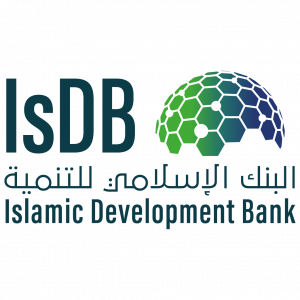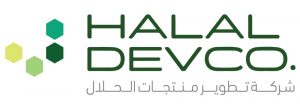Saudi Gazette
JEDDAH – The world Muslim population is approaching 1.8 billion persons, or roughly one-quarter of the entire world’s population. Muslims are expected to account for 36 percent of the world’s population by 2025.
Presently, Southeast Asia and the Middle East are the two strong markets for Halal food products (HFPs). Major US poultry processors export to these markets, whereas secondary suppliers provide beef. The primary sources of beef in these markets are imports from Australia and New Zealand.
Southeast Asia is home to more than 250 million HCFPs consumers. Indonesia, Malaysia, and Singapore have had regulations to control export HFPs for a number of years. Recently, Thailand, the Philippines, and other countries have realized the value of HFPs. Their governments have formulated regulations to promote both exports and imports.
Saudi Arabia, United Arab Emirates, and other Middle Eastern countries are net importers of processed foods both for personal consumption and retail markets. North Africa and other African countries also offer opportunities for export of processed food as their economies and political conditions improve.
Bangladesh, India, Pakistan, and Sri Lanka are home to almost 1.3 billion people, of which over 400 million are Muslims. Although this region is an agricultural economy, these countries do import certain processed items, especially for food service.
In the early1990s, the potential of the Southeast Asian and Middle Eastern markets for HFPs started to be realized, leading to an increase in the production and certification processes. This has expanded into South Asia, the Mediterranean, Europe, and Central Asia. Even Muslim-minority countries such as Singapore and South Africa have shown that the HFPs business is good business. Although the Muslim community forms only 16 percent of the 3.8 million population of Singapore, the halal food industry is big business. McDonald’s, A&W, Kentucky Fried Chicken, and Taco Bell are some of the major international brands that have gone 100 percent halal. Muslims living in western countries and the addition of Westerners to Islam is resulting in some changes in the behavior. Muslims now requesting food products that meet their dietary needs.
Below are the geographical developments in the global halal market:
Asia
While Asia has the largest Muslim population of any given region, its population has modest per capita incomes, and hence lower total food consumption than other areas. In 2006, the Malaysian Halal Industry Development Corporation (HDC), was formed to coordinate the development of the Halal industry, focusing on standards, audit, certification, plus capacity building for Halal products and services.
Malaysia, Thailand, Singapore, the Philippines, Brunei, China and India have all taken steps to tap into the global Halal meat market. The Singapore food industry has also taken a number of steps toward becoming a Halal meat hub, including an ongoing strong advertising campaign in the Middle East. Thailand has moved to become a recognized center of excellence in science and testing. Brunei is currently co-operating with Australian companies to combine its role in the Muslim world with Australia’s track record in safe, high quality food production.
The Chinese Halal industry has the key advantage of cheap labor. China recently signed a Memorandum of Understanding with the European Commission (EC) and already has several EC-approved companies ready to export Halal products to European markets.
Europe
Europe is seen as an important market for Halal products on the basis of higher purchasing power. Furthermore, non-Muslims’ willing to purchase HCFPs on the basis of the belief that such products are safe.
Figures vary considerably with industry estimates for the global Halal food market ranging from $240 billion to $810 billion. Estimates on the size of the European Halal food market also vary, but in 2006 the USDA Foreign Agricultural Service suggested a conservative figure of $21 billion.
Muslims across Europe have far higher consumer spending power than those in the Middle East and North Africa with second and third generation European Muslims seeking out convenience and looking for products such as Halal pizzas, lasagna and hot dogs.
The port of Rotterdam has been officially designated as halal at the World Islamic Economic Forum (WIEF) and has dedicated warehouses solely to halal products and toward ensuring they do not come into contact with non-halals.
France has the largest population of Muslims in Europe estimated to be 5 million Muslims and as such is the largest market for halal products among non-Muslim countries. The value of the French market for halal products has been estimated at over $17 billion.
The Middle East
Middle East countries, especially members of GCC, have higher incomes and consequently higher per capita rates of consumption. In addition, the region imports 80 percent of its food requirements.
Saudi Arabia and the United Arab Emirates (UAE) are seen as the most important markets in the region. Currently Brazil is the largest exporter to the two countries followed by the EU and the US. Saudi Arabian companies involved in the halal industry include Al-Radwa Farms, Al-Watania, Supreme Foods, Nash Meat and Sunbullah.
UAE companies involved in the halal business include Al-Islami Foods, Al-Babeer, AlAreesh, Arctic Gold, Royal Meat and Emirates Meat. Turkey has a good potential as supplier of halal products, particularly to EU counties. Egypt was recently seen as the most important market for halal food in North Africa. However, it has been noted that the “complex regulatory system” in Egypt has led a number of potential suppliers to serve the market through investment rather than exports.
The United States
Muslims in the US, as of 2009, are estimated at 15-16 million and they are spread all over the continent in cities both large and small. In the US, major halal food markets are in – New York City, New Jersey, Los Angeles, Chicago, Detroit, Houston, Dallas/Fort Worth, South Florida, San Francisco. According to one estimate, the buying power of Muslim consumers in North America was worth $19 billion in 2009.
A Kansas company launched a line of halal frozen pizzas, an Ontario company has an extensive line of frozen halal meat, poultry, and other products. Most meat companies used to make HFPs only for export. Now, small- to mid-size companies are producing halal products exclusively for the domestic US and Canadian markets.
As with everyone else, Muslims have a very busy life style. Increasingly, daily activities at work and home do not allow them to prepare meals at home. Muslims, like any other segment of population, are involved with their jobs and other away from-home activities and demand on their time has increased. Consequently, availability of halal prepared foods will serve a very useful purpose.
Vending is another area where a tremendous opportunity exists for halal food. Items such as sandwiches, hot meals (such as beef stew and soups), cookies, cakes and rolls, ice cream, and candy could be made available in places where the concentration of Muslims might not justify other types of foods. Halal food vending can also be considered for cafeterias in schools, colleges, hospitals and places of business with lower concentrations of Muslims.
There are over nine thousand grocery items on the typical shelves of North American and European supermarkets, and many more are being added daily. Muslims are making their decisions based on the ingredient information on the labels and increasing number of food processors are adding halal labels on their products.
Challenges Ahead
However, becoming a leader in halal supply chain for Malaysia is not an easy task. Today, the major challenges involved in halal supply chain comes in 3 main forms:
• Developing Consistent Processes
• Use of Information Technology
• Adopting to changing needs
Consistent Process … from Farm to Table
The complexities of the halal supply chain extend to include the business logistics. Investors need to be well versed in the Islamic ethos in order to preserve the “halal integrity” of food products. With the legitimacy of some products coming under fire, the industry is now demanding more conformity.
The HFPs industry should adopt a “farm to table” steps presenting opportunities for various businesses including ports, shipping and freight forwarding, warehousing and handling facilities. With global standardization in the certification process many producing countries are moving ahead more than the Eastern major consumers.
Meat and livestock business in Malaysia and Australia, for example, had launched HFPs brands in the Middle East in recognition of the growing meat retail market in the Muslim world. This response has already brought impressive dividends. It is estimated that in 2010 Australia exported 51,151 tons of mutton, 19240 tons of lamb and 5,826 tons of beef valued at $325 million.
The usual requirements of ensuring an adequate infrastructure to transport, store and market fresh produce such as cold chain management are also on the top of MLA’s priorities for halal meat. It is believed that Indonesia and Malaysia with help GCC businesses in Islamic ethos and direct investments could take the lead in this area by developing standards of measuring and ensuring compliance in the entire halal supply chain.
Adapting to changing needs
Halal supply chains include stages from procurement and preparation of genuine halal ingredients to the manufacturing and delivery of final products to customers.
This includes the separation of halal ingredients from non-halals such as alcoholic or pork-related products, throughout the entire chain. Similar measures need to be adopted in other areas such as transporting halal fed animals to slaughterhouses or shipping chilled or frozen halal meat in enclosed shipping containers. This makes it necessary to create a collaborative network, whereby GCC businesses would have entry points. There is increasing need to ensure that knowledge be multiplied and taught to expand awareness and skills.
Conclusion
The logistics of the HFPs industry show a dynamic market in the Muslim world. Halal products’ rate of growth, undoubtedly, indicates areas creating opportunities for investment and food national security. HFPs and their supporting service providers will have to work harder to ensure participants meet halal requirements.
About Supply Chain Asia
Asia is a community that seeks to provide an open and conducive platform for professionals in this industry to network, share and learn from each other. Access to Supply Chain Asia is open to those who work in this industry or has a keen interest in its development. Make Supply Chain Asia your Community of Choice. Become a Supply Chain Asia member. – SG



